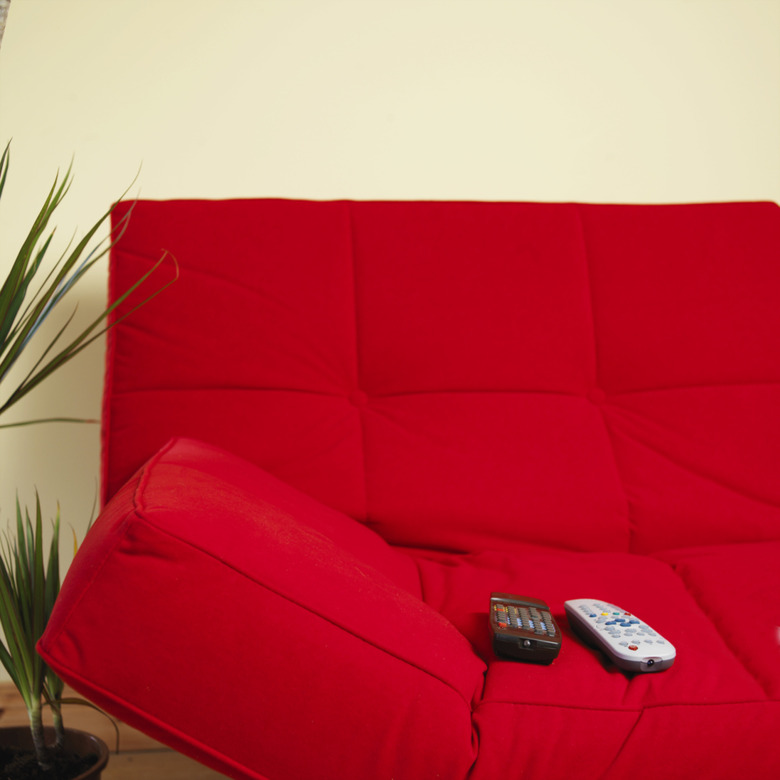How To Eliminate Mildew In A Futon
Things Needed
-
Clean rags
-
Broom
-
Vacuum cleaner
-
Liquid soap
-
Lemon juice
-
Salt
-
Chlorine bleach
Warning
Remove the pad from the futon cover, if possible. It's important to know whether the pad has been impacted by the mildew so that it can be properly treated.
Check and double-check for colorfastness as you move from one cleaning solution to another. There's no reason to get rid of the mildew only to end up with a stained futon.
You recognize the musty smell, the obvious dark, thin trail of mildew. You're horrified to see that it has attached itself to your favorite futon, the one you intended to move from the damp basement into your reading room. There's no reason to panic. The simple fungi we call mildew can be removed from nearly any surface, provided you're willing to expend a little elbow grease.
Prepare the Fabric for Treatment
Step 1
Take the futon outdoors and, using a broom, brush any of the visible mold from its surface. You don't want the mildew spores to scatter around the house.
Step 2
Take it one step further by vacuuming the futon cushion. If you have a bag in your vacuum canister, remove and dispose of it immediately. If you do so outdoors you further reduce the risk of spreading spores in your home.
Step 3
Sun and fresh air are the enemy of mildew, so allow your futon plenty of time outdoors to soak up both.
Step 4
Check to see if the futon fabric is washable. If so, continue to the next step. If not, you'll need to have it dry cleaned.
Clean the Fabric
Step 1
Check for colorfastness before attempting any of these cleaning processes.
Step 2
If you've determined that your futon is colorfast, sponge the infected area lightly with a mixture of soap and water. Use as little water as you can to prevent soaking the futon pad.
Step 3
If any stain remains after washing the futon with soapy water, clean them with a mixture of lemon juice and salt. Spread the futon out so that the fabric can bleach in the sun.
Step 4
If stubborn mold remains, try a chlorine bleach solution. Mix 1/4 tsp. of bleach with 1 cup of water, dip a clean rag into the mixture and apply lightly to the fabric. It is especially important to test this cleaning solution in an inconspicuous area to test for colorfastness.
Step 5
Be sure to wipe any solution you have used away with a clean rag. Allow the futon to dry thoroughly to avoid giving birth to more mildew.
When to Get Help
Step 1
If the mildew is especially stubborn or has seeped down into the padding, it may be time to send the futon out for dry cleaning.
Step 2
Let the dry cleaner know that you're dealing with a mildew problem so that he can properly dry and fumigate the futon cushion.
Step 3
Remember to protect your newly cleaned futon by keeping it in a dry room with adequate air circulation.
